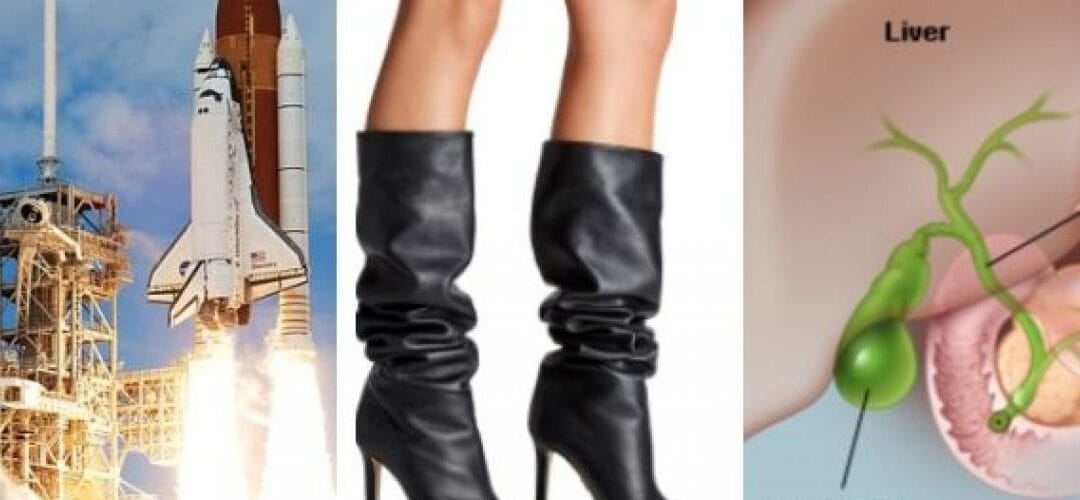By Paul Culp, MA (Oxon.), CFT, GCDF, CCSP
Note: This article originally appeared elsewhere, but we are resurrecting it in connection with an upcoming post on trade schools. Stay tuned.
We live in exciting times for manufacturers—times that can be humbling for the same reason they’re stimulating: New technologies come out of nowhere and lead to new methods and new opportunities to get ahead, but those same technologies might mean rethinking everything you’re doing if you want to survive and thrive. And that’s for the owners and managers. These developments also present obvious challenges for workers—even the most highly skilled—whose expertise might be rendered obsolete with very little warning.
One of the most potentially disruptive technologies now making its presence felt is 3D printing, which appears ready to revolutionize manufacturing by making it possible for companies, and even individuals, to use a CAD file to make things by building them up rather than by traditional manufacturing processes, which actually involve tearing things down.
What?
Be patient with us for a second here.
Most manufacturing as we know it is “subtractive” manufacturing. Raw materials are cut and shaped into components. Yes, those components are then added together, but they were created by a process of subtraction.
3D printing, on the other hand, is additive manufacturing, often called AM. (It’s likely to become addictive as well as additive, as we shall see.) According to 3dprinter.net, 3D printers “create a three-dimensional object by building it layer by successive layer, until the entire object is complete. It’s much like printing in two dimensions on a sheet of paper, but with an added third dimension: up…Each of these printed layers is a thinly-sliced, horizontal cross-section of the eventual object.”
With the CAD program telling it what to do, a 3D printer simply deposits layers of polymer or metal (to name two possibilities) one on top of the other, using lasers to bind the layers to each other, until the object is finished.
3D printing: out of the R’n’D lab…
Until recently, 3D printing was used mainly for whipping up models and prototypes, which AM can do in less time and with less waste than is the case with traditional methods, speeding up research and development. Increasingly, however, the emphasis is on using AM to turn out the actual goods.
“We are going to live in a world where anyone can create and customize, and iterate with blinding speed,” an anonymous financial expert told Forbes.
…and onward to the Wild Blue, the high seas, and your innards…
According to Accenture, General Electric’s oil and gas division is developing a process to print metal fuel nozzles for gas turbines. A company in California is working on a method to build houses by using a 3D printer mounted on a tractor-trailer and spurting layers of concrete. 3dprinting.com reports that Boeing is saving $2 million to $3 million per unit on its 787 by using tons of printed parts and that NASA is working on a way to improve the skin on the Space Shuttle via 3D printing.
NASA also is reportedly considering 3D as a means of manufacturing needed parts during space missions instead of incurring the cost of rocketing heavy objects into space, and the Navy is rumored to be manufacturing airplane parts at sea by using 3D printing. Scott Summit, who heads Bespoke Solutions in San Francisco, says this makes sense:
“It used to be that resupply was the Achilles Heel. But now you can make the parts remotely as needed, eliminating the need for inventory. On the moon, for example, you could use a naturally occurring substrate such as silica, which is commonly found on the surface there. All you need is a binding agent.”
Bespoke Solutions, by the way, manufactures artificial limbs, but in the realm of 3D printing a man in the prosthetics game can speak with considerable authority about space travel.
Former ship’s captain John Konrad says ships “could conceivably become manufacturing plants. Install a bank of 3D printers aboard ship and the vessel could pick up raw materials overseas and begin manufacturing products during the voyage to the United States.”
AM’s capacity for customization has made it a boon to the medical and dental professions also, as it permits the creation of replacement parts for the human body, as well as providing surgeons the opportunity to create customized models on which to practice procedures. With 3D printing, they’re not practicing for just anybody’s gallbladder operation; they’re practicing for your very own.
…and into your closets.
Amid all this scientific joy, the fashion industry has reason to tremble in its boots, because we appear to be headed for a world in which anyone with access to a printer can make his or her own boots. (Dr. Martens, with your whole-sizes-only policy, beware!) Companies like Shapeways that offer customized goods are thriving, with available products including jewelry, kitchen utensils, artwork, and furniture.
And as with so many new technologies, it looks like the young folks are getting a head start. Disruptionhub reports that “Mattel’s ThingMaker only creates small toys, but it’s still familiarizing children with a process that is set to become common knowledge.”
This is not just the stuff of wishful thinking or science fiction, with a long wait time. (I’m thinking of Isaac Asimov’s short story, “The Fun They Had,” which foretold Kindle and virtual schools—in 1951). The at-home technology is already here. Hongkiat reports that the Peachy Printer sells for only $100, while the Buccaneer, ready to use right out of the box and food-safe (really) will set you back $999. For people who don’t have their own apparatus at home, no problem; the future promises the AM equivalent of going down to the neighborhood FedEx to use the copy machine, and the online equivalent: Send ‘em your design and see quick results, like with Zazzle.
It won’t be painless.
But of course all of this will come at a price.
Accenture is worth quoting at length on the subject of disruption:
One of the most daunting questions is how digital supply networks will evolve, given digital’s ability to figuratively link designers, suppliers, manufacturers, logisticians and consumers. We know the potential for disruption is enormous: Think what digital has done for (or to) the publishing, music, photography and telecommunications industries. Music, for example, used to have a physical form (a record, tape or CD). Now, most music is translated into a digital format and an entire digital supply chain has emerged: from design (composition) to recording to distribution to consumption.
With 3D printing, entire industries could become unrecognizable almost overnight—or disappear, taking jobs with them. Owners of warehouses probably won’t go the way of blacksmiths and darkroom technicians—not entirely—but customization and a more rapid conception-to-production-to-delivery process will mean less stockpiling. Long-term business relationships are also likely to become less common as more companies and individuals find they can gain more satisfaction (dare we put it this way?) from the hasty hook-up. It’s reasonable to surmise that employer loyalty to employees will be compromised, to put it mildly.
Cheap manufacturing could conceivably bring more production back to the U.S. and ease our trade deficit with China—but of course the Chinese will have AM too, so let’s not start congratulating ourselves yet. And if ship’s captain Konrad is correct regarding ships as floating factories, maritime and corporate lawyers stand to benefit from controversies about just what country is using whatever other country’s ship to do whatever, and who is to be taxed. (“If you Dutch won’t play ball, I’ll move my factory to that Filipino freighter over there!”) People who want to steal intellectual property will find new ways to do it—they always do—but the reorganization of manufacturing under AM will also create new means of prevention. Let’s hope so, anyway.
3D printing for nostalgia amid dislocation…
Paradoxically, some people likely will find ways to apply AM to resisting change, as 3D printing can be used to help keep our cherished older possessions going. Owners of vintage cars, for example, are already benefiting from the opportunity to make their own versions of those hard-to-find parts. If you have a broken tone arm on your old phonograph, or a broken carriage-return lever on your typewriter, 3D printing might actually enable you to stay at your accustomed technological level by averting the disuse and disposal of beloved belongings. How nice for you, then, but not so nice for the manufacturers of new goods. Planned obsolescence might not be so easy to plan anymore, the lifespan of a product not so easy to predict.
For some, 3D printing will mean the democratization of manufacturing. For others it will mean layers of bewilderment piled upon bewilderment (as if by a 3D printer). Additive manufacturing will add new jobs, but it also is likely to subtract at least as many.
Perhaps the crucial question at this point is: Can 3D printing be used to create something better than a crystal ball? With AM’s revolutionary potential, we’re all going to need it. Here at The Coaching Educator, we haven’t gotten there yet, but we’ve spent more than a decade keeping up with trends in education and career planning.
Though many people in our field have no credentials in education, we have them, and we also are certified as career services professionals by the National Career Development Association and the Center for Credentialing & Education. We can help you look ahead and make the most informed choice about what to do, where, when, and with what financial assistance.
To learn more about our philosophy and capabilities, be sure to watch our free webinars, listen to our podcasts, sign up for our four-week College App Boot Camp, consider our Ultimate Programs and our special services for athletes and performing-arts students, and book a consultation to hear what we can do for you and how we do it. Keep reading this blog, and look for us on social media (see links below) as we keep our clients and admirers advised of new developments in our effort to help students get into and succeed at the right school.
Paul Culp is certified as a global career development facilitator and writes about college admissions, college costs, financial aid, and college life in general for The Coaching Educator team. A former journalist and corporate ghostwriter who now operates Shenandoah Proofreading, Editing & Composition Services (SPECS), he has also been a humanities teacher at all levels from university down to sixth grade. Paul has degrees from Oxford University, Jacksonville State University, and Samford University, and also is certified as a fitness trainer.
Image credits: Boots by Tamara Mellon, gallbladder by WebMD, space shuttle by NASA.
Recommended reading about education and technology:
Culp, Paul. “The Rise of Artificial Intelligence and the Need for Liberal Arts Education,” The Coaching Educator, 7 June 2018, http://tce.local/2018/06/07/the-rise-of-artificial-intelligence-and-the-need-for-liberal-arts-education/

